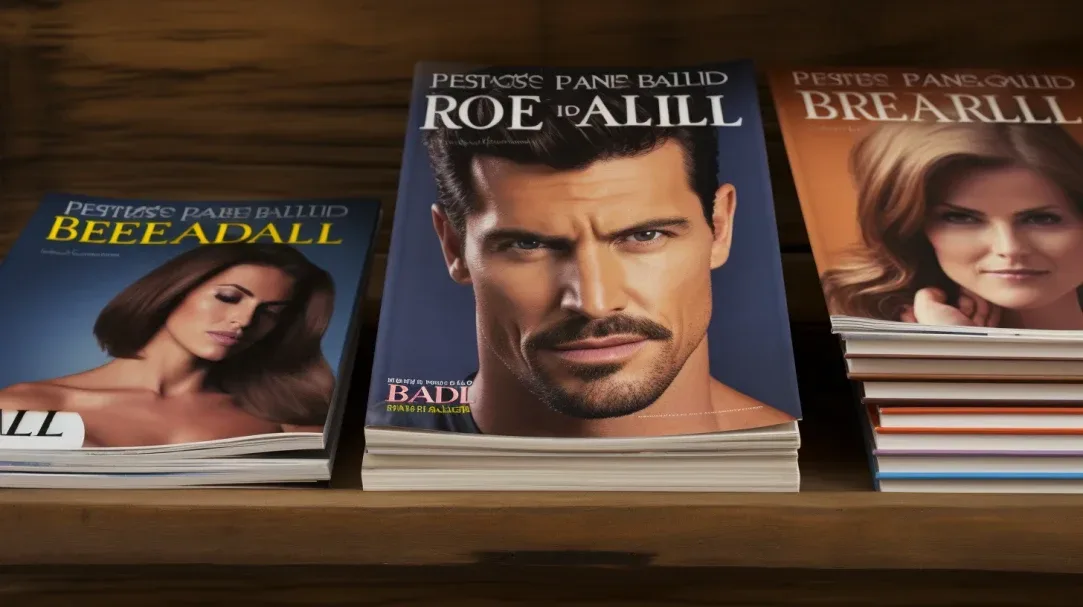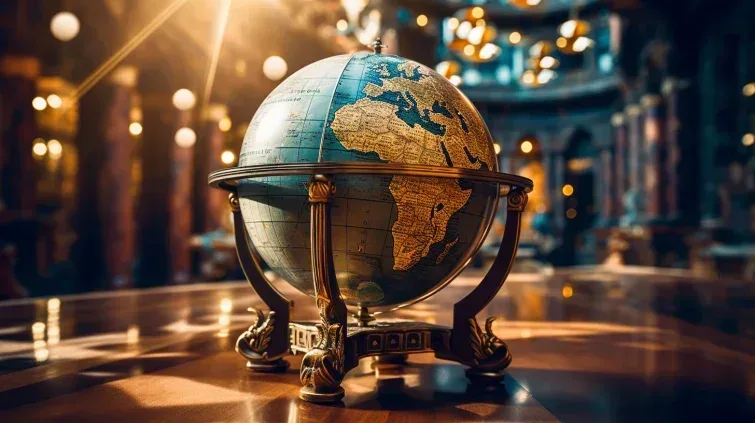Revealed: Surprising Secrets And Must-Know Facts Of Men’s Magazines
In our modern society, the influence of men’s magazines cannot be overlooked. These publications have shaped popular culture, influenced fashion trends, and even played a role in defining masculinity.
However, beneath the glossy covers and enticing headlines lie surprising secrets and must-know facts that many are unaware of. In this revealing exploration, we delve into the hidden world of men’s magazines, shedding light on the true impact of airbrushing, uncovering celebrity photoshoot secrets, and examining the controversial content that pushes boundaries.
We also examine the rise of digital men’s magazines and explore their connection to masculinity.
Join us as we reveal the surprising secrets and must-know facts of men’s magazines, providing a deeper understanding of their lasting influence on our society.
Key Takeaways
- Men’s magazines have played a significant role in shaping societal norms, fashion trends, and body image standards.
- These magazines have evolved to showcase a more diverse and realistic representation of masculinity.
- They influence popular culture through fashion editorials, style guides, and interviews with designers.
- Men’s magazines have faced controversies regarding ethical considerations, such as perpetuating stereotypes and objectifying individuals.
The True Impact of Airbrushing
In recent years, the true impact of airbrushing in men’s magazines has come under scrutiny. Airbrushing, a technique used to digitally alter and enhance images, has long been a common practice in the media industry. However, questions have been raised about its effects on the self-esteem and body image of men who consume these magazines.
Does airbrushing create unrealistic expectations and perpetuate an unattainable standard of physical perfection? Some argue that it contributes to feelings of inadequacy and body dissatisfaction among men, leading to negative mental health outcomes. On the other hand, proponents of airbrushing argue that it is simply a tool used to enhance images and create a desirable aesthetic.
Understanding the true impact of airbrushing in men’s magazines requires a comprehensive analysis of its effects on individuals and society as a whole.
Uncovering Celebrity Photoshoot Secrets
When flipping through the glossy pages of men’s magazines, it’s hard not to be captivated by the flawless images of celebrities. But have you ever wondered how these photoshoots come to life?
What hidden editing techniques are used to enhance their appearance? And what secrets do celebrities rely on when striking those perfect poses? Furthermore, what goes on behind-the-scenes in terms of wardrobe choices that contribute to the overall image?
In this article, we will uncover the surprising secrets and must-know facts of celebrity photoshoots, revealing the hidden techniques, posing secrets, and wardrobe choices that make these images so captivating.
Hidden Editing Techniques
Many men’s magazines employ sophisticated editing techniques to enhance the appearance of celebrities in their photoshoots. These hidden editing techniques are carefully implemented to create a flawless and visually appealing final product. But what are some of these techniques used behind the scenes?
- Airbrushing: One common technique is airbrushing, which involves digitally smoothing out imperfections on the skin, such as wrinkles, blemishes, and uneven skin tone. This helps to create a flawless complexion for the celebrity.
- Body shaping: Another technique often used is body shaping, where editors manipulate the shape and size of certain body parts. This can involve slimming down the waist, enhancing curves, or even adding muscles to create the desired look.
- Color correction: Editors also use color correction techniques to enhance the overall appearance of the photo. This can involve adjusting the lighting, saturation, and contrast to create a more vibrant and visually appealing image.
These hidden editing techniques play a crucial role in creating the captivating and seemingly perfect images that grace the pages of men’s magazines.
Celeb Posing Secrets
To uncover the secrets behind celebrity photoshoots in men’s magazines, it is essential to delve into the techniques and strategies employed by photographers and celebrities themselves. These photoshoots are carefully planned and executed to capture the perfect image that will captivate readers. Celebrities, with the guidance of skilled photographers, use a variety of posing secrets to enhance their appearance and create a desired image. Let’s take a look at some of these secrets:
| Posing Secret | Description |
|---|---|
| Angles | Celebrities are aware of their best angles and use them to create a flattering image. By positioning their bodies in a certain way, they can emphasize their best features and downplay any perceived flaws. |
| Body Language | The way a celebrity holds themselves can convey a specific message or emotion. They use body language to convey confidence, sensuality, or vulnerability, depending on the desired effect. |
| Facial Expressions | Expressions play a crucial role in capturing the essence of the celebrity. They are skilled at conveying a range of emotions through their eyes, smiles, and subtle movements of the face. |
Behind-The-Scenes Wardrobe Choices
The wardrobe choices made behind-the-scenes of celebrity photoshoots in men’s magazines play a crucial role in uncovering the secrets that contribute to capturing the perfect image. From selecting the right outfits to experimenting with different styles, these choices can make or break a photoshoot.
But what are some of the behind-the-scenes wardrobe secrets that go into creating those iconic images?
- Mixing and matching: Stylists often try different combinations of clothing items to create unique and eye-catching looks. They carefully consider colors, patterns, and textures to ensure the outfits complement the celebrity’s features and personal style.
- Accessorizing for impact: The right accessories can elevate an outfit and add that extra touch of glamour. Stylists pay close attention to details like jewelry, belts, and hats, selecting pieces that enhance the overall look and make the celebrity stand out.
- Tailoring for perfection: Tailoring is essential to create a polished and tailored appearance. Stylists work closely with designers and tailors to ensure that each garment fits the celebrity perfectly, enhancing their body shape and creating a more flattering silhouette.
The Evolution of Men’s Magazine Covers
Men’s magazine covers have undergone a significant transformation throughout the years, reflecting changes in society, fashion, and cultural norms.
From the early days of men’s magazines, which primarily featured conservative and traditional images of masculinity, to the present day, where covers showcase a more diverse range of body types, styles, and interests, the evolution of men’s magazine covers is a fascinating reflection of our changing times.
In the past, men’s magazine covers often portrayed a stereotypical image of the ideal man, with chiseled abs, muscular physique, and a rugged, masculine demeanor. However, as society has become more inclusive and accepting of different body types and identities, men’s magazine covers have also evolved to reflect these changes. Today, we see covers featuring men of all shapes and sizes, showcasing a more realistic and diverse representation of masculinity.
Furthermore, men’s magazine covers have also adapted to the ever-changing landscape of fashion and style. In the past, covers often featured men in formal attire, reflecting the traditional expectations of masculinity. However, as fashion has become more fluid and individualistic, men’s magazine covers now showcase a wide range of styles, from streetwear to high fashion, catering to the diverse tastes and interests of modern men.
The cultural norms surrounding men’s magazine covers have also shifted over time. In the past, covers often emphasized traditional gender roles and objectified women, catering to a predominantly male readership. However, in recent years, there has been a growing recognition of the need for more inclusive and respectful representation. As a result, men’s magazine covers now feature a more balanced portrayal of men and women, highlighting their achievements, talents, and contributions, rather than solely focusing on their physical appearance.
Controversial Content: How Far Is Too Far
Controversial content in men’s magazines has raised questions about the boundaries and limits of acceptability. As society evolves, what was once considered acceptable may now be deemed offensive or inappropriate. So, where do we draw the line? Here are three factors to consider:
- Target audience: Men’s magazines often cater to a specific demographic, so the content should align with their interests and preferences. However, it’s essential to strike a balance between providing entertainment and respecting societal norms.
- Cultural sensitivity: With the globalization of media, it’s crucial for men’s magazines to be aware of cultural differences and avoid perpetuating stereotypes or offending specific communities. Sensitivity towards diverse perspectives is key.
- Social responsibility: Men’s magazines have a responsibility to promote positive values and avoid content that encourages harmful behavior or objectifies individuals. Ensuring that content is respectful and empowering is vital in maintaining credibility and fostering a healthy readership.
Ultimately, the question of how far is too far remains subjective, but being mindful of these factors can help guide the decision-making process.
The Influence of Men’s Magazines on Popular Culture
Men’s magazines have long played a significant role in shaping popular culture. They have influenced societal norms, fashion and style trends, and body image standards for both men and women.
Specifically, these publications have contributed to changing societal norms by showcasing and promoting certain behaviors and attitudes as desirable or aspirational. They often feature articles and profiles that highlight what is considered “cool” or “manly.” This can range from advice on dating and relationships to tips on career success and personal development. By presenting these ideas as the norm, men’s magazines have helped shape the expectations and behaviors of their readers.
In terms of fashion and style trends, men’s magazines have played a crucial role. They often feature fashion editorials, interviews with designers, and guides on how to achieve a certain look. By highlighting specific brands, styles, and grooming routines, these publications have the power to influence what is considered fashionable and stylish. Many men turn to these magazines for inspiration and guidance when it comes to their own personal style.
One of the most significant impacts of men’s magazines is on body image standards. These publications often feature highly muscular and well-groomed male models, creating an idealized image of the male body. This can lead to body dissatisfaction and unrealistic expectations for both men and women. Men may feel pressure to conform to these standards, often resorting to extreme dieting and exercise regimes. Similarly, women may internalize these body ideals and feel pressure to seek out partners who fit this idealized image.
Changing Societal Norms
The impact of men’s magazines on popular culture can be observed through the shifting societal norms they have influenced. These magazines have played a significant role in shaping and redefining what is considered acceptable or desirable for men in society.
How have men’s magazines influenced societal norms?
- Redefining masculinity: Men’s magazines have challenged traditional notions of masculinity by promoting a more inclusive and diverse representation of what it means to be a man. They have encouraged men to embrace their individuality and express themselves freely, breaking away from rigid gender roles.
- Body image and self-care: Men’s magazines have played a pivotal role in changing societal norms around body image and self-care for men. They have encouraged men to take better care of their physical and mental health, promoting fitness, grooming, and mental well-being.
- Relationship dynamics: Men’s magazines have also had an impact on relationship dynamics by providing advice and guidance on dating, love, and intimacy. They have influenced societal norms around consent, communication, and gender equality in relationships.
Men’s magazines continue to shape and influence societal norms, challenging stereotypes and promoting a more inclusive and progressive society.
Fashion and Style Trends
One of the key influences of men’s magazines on popular culture is the significant impact they have had on fashion and style trends. Men’s magazines have long been a source of inspiration for men looking to stay updated on the latest fashion trends. From tailored suits to casual streetwear, men’s magazines have played a pivotal role in shaping the way men dress. But what specific trends have men’s magazines popularized? Let’s take a closer look at some of the fashion and style trends that have been influenced by these magazines:
| Trend | Description | Examples |
|---|---|---|
| Athleisure | The blending of athletic and leisurewear | Sweatpants paired with blazers or sneakers with suits |
| Minimalism | Simplistic and clean designs | Monochromatic outfits and minimalist accessories |
| Statement Pieces | Bold and eye-catching items | Oversized jackets, patterned shirts, and statement sneakers |
With their wide reach and influence, men’s magazines continue to shape the fashion choices of men around the world, making them a significant force in popular culture.
Body Image Standards
Body image standards perpetuated by men’s magazines have had a significant influence on popular culture. These magazines often portray a specific ideal of the male body, which can create unrealistic expectations and contribute to body dissatisfaction among men.
But what exactly are these body image standards and how do they impact society? Let’s explore:
- Muscularity: Men’s magazines often emphasize a muscular physique as the ultimate standard of attractiveness. This can lead to the belief that a man needs to have a chiseled body with well-defined muscles in order to be considered attractive.
- Six-pack abs: The obsession with six-pack abs is another common body image standard perpetuated by men’s magazines. This emphasis on a flat, defined stomach can create pressure for men to constantly strive for a perfectly sculpted midsection.
- Body hair: Men’s magazines often promote the idea of a hairless body, with models frequently depicted as smooth and hair-free. This can contribute to body image issues for men who do not naturally conform to this standard.
Behind the Scenes: A Day in the Life of a Men’s Magazine Editor
An integral aspect of the men’s magazine industry is the daily routine of a dedicated editor. Have you ever wondered what goes on behind the scenes to produce those glossy pages filled with advice on fashion, fitness, and lifestyle? Let’s take a closer look at a day in the life of a men’s magazine editor.
| Time | Task | Description |
|---|---|---|
| 8:00 am | Editorial meeting | Discussing and assigning articles, brainstorming ideas. |
| 10:00 am | Reviewing pitches | Reading and evaluating article proposals from freelance writers. |
| 12:00 pm | Editing and proofreading | Ensuring articles conform to the magazine’s style and tone. |
| 3:00 pm | Layout and design | Collaborating with the design team to create visually appealing pages. |
As you can see, the life of a men’s magazine editor is a dynamic one, involving a variety of tasks to ensure the magazine stays relevant and engaging. Now, let’s delve into the fascinating world of decoding the hidden messages in men’s magazine advertisements.
Decoding the Hidden Messages in Men’s Magazine Advertisements
To gain a deeper understanding of men’s magazine advertisements, it is essential to decipher the hidden messages they convey. These ads are carefully crafted to appeal to the desires and aspirations of their target audience. But what exactly are these hidden messages? Let’s take a closer look:
- Idealized masculinity: Many men’s magazine advertisements portray a specific version of masculinity that is often unattainable. These ads often feature muscular, confident men engaging in activities that are associated with power and success.
- Product association: Advertisers often use subtle cues to associate their products with certain desirable qualities. For example, a fragrance ad may show an attractive woman being attracted to a man wearing the advertised cologne, implying that using the product will make men more attractive to women.
- Lifestyle aspirations: Men’s magazine ads often sell more than just products; they sell a lifestyle. By showcasing luxurious settings, expensive cars, and fashionable clothing, these ads create a desire for the glamorous lifestyle depicted.
Exposing the Tricks Used to Create Perfectly Sculpted Bodies
Continuing the exploration of men’s magazine advertisements, an examination of the tricks employed to create the illusion of perfectly sculpted bodies reveals the meticulous strategies used to perpetuate an unattainable standard of physical perfection. These magazines often rely on a combination of clever photography techniques, skilled lighting, and expert photo editing to enhance the appearance of their models. Additionally, makeup, oil, and strategic positioning are employed to accentuate muscle definition and create the illusion of a more chiseled physique. The use of props, such as weights or exercise equipment, further enhances the perception of strength and fitness. Below is a table that provides an overview of the tricks used to create these seemingly flawless bodies:
| Tricks Employed | Description |
|---|---|
| Clever Photography Techniques | Manipulation of angles and perspectives to highlight desired features. |
| Skilled Lighting | Use of shadows and highlights to enhance muscle definition. |
| Expert Photo Editing | Digital retouching to remove imperfections and enhance physical attributes. |
The Rise of Digital Men’s Magazines
With the increasing prevalence of digital platforms, men’s magazines have experienced a notable shift towards embracing the advantages of the online realm. This transition has sparked profound changes in the way men consume content and stay informed about the latest trends.
But what exactly has fueled the rise of digital men’s magazines? Let’s explore three key factors:
- Accessibility: Digital magazines are available at the touch of a button, allowing men to access content anytime and anywhere, whether it’s on their smartphones, tablets, or laptops.
- Interactivity: Unlike their print counterparts, digital magazines offer interactive features such as embedded videos, clickable links, and social media integration, enhancing the overall reading experience.
- Personalization: Digital magazines can tailor content to individual preferences, providing targeted recommendations based on readers’ interests, browsing history, and demographics.
As technology continues to evolve, digital men’s magazines are poised to become an even more integral part of men’s lifestyle and entertainment.
Revealing the Dark Side of the Men’s Magazine Industry
Despite its glamorous image, the men’s magazine industry harbors a darker side that often goes unnoticed by its readers. While these magazines are known for their glossy pages filled with fashion, fitness, and lifestyle advice, there are underlying issues that deserve attention. One of the main concerns is the objectification of women, perpetuating unrealistic beauty standards and reinforcing gender stereotypes. Another aspect is the promotion of toxic masculinity, which can have negative effects on men’s mental health and relationships. Additionally, there have been instances of unethical practices, such as photo manipulation and airbrushing, which further contribute to the distortion of reality. By examining these issues, we can gain a deeper understanding of the impact men’s magazines can have on society and work towards promoting more inclusive and responsible content.
| Dark Side of the Men’s Magazine Industry |
|---|
| Objectification of women |
| Promotion of toxic masculinity |
| Unethical practices |
| Distortion of reality |
Exploring the Connection Between Men’s Magazines and Masculinity
Numerous studies have examined the relationship between men’s magazines and masculinity, shedding light on the influence these publications have on shaping societal perceptions of manhood. But what exactly is this connection? How do men’s magazines contribute to the construction and reinforcement of masculinity?
- Men’s magazines often portray a hypermasculine ideal, emphasizing physical attractiveness, muscularity, and sexual prowess. They perpetuate traditional gender roles and reinforce societal expectations of male behavior and appearance.
- These publications often promote a narrow definition of masculinity, neglecting the diversity and complexity of male experiences. This can lead to feelings of inadequacy or pressure to conform to unrealistic standards.
- Men’s magazines also play a role in the commodification of masculinity, promoting consumerism and encouraging men to buy products that promise to enhance their masculinity.
Understanding the connection between men’s magazines and masculinity is crucial in critically analyzing and challenging societal norms and expectations surrounding manhood.
The Future of Men’s Magazines: Trends and Predictions
As men’s magazines navigate the ever-evolving media landscape, two key factors come into play: the battle between digital and print platforms, and the shifting demographics of their target audience.
With the rise of online content consumption, will traditional print publications be able to adapt and thrive in a digital world? Moreover, as societal norms and perceptions of masculinity continue to evolve, how will men’s magazines adjust their content and messaging to resonate with a changing demographic?
These trends and predictions will shape the future of men’s magazines, and understanding them is crucial for industry professionals.
Digital Vs. Print
In the ever-evolving world of men’s magazines, the shift towards digital media is becoming increasingly prominent, as publications increasingly rely on online platforms to cater to their audience’s preferences. But what does this mean for the future of men’s magazines? Let’s explore some key trends and predictions:
- Greater accessibility: Digital magazines offer instant access to content, allowing readers to conveniently consume articles, interviews, and features on their preferred devices.
- Interactive experiences: With digital formats, magazines can incorporate multimedia elements like videos, animations, and interactive features, enhancing the overall reading experience.
- Data-driven insights: Online platforms provide publishers with valuable data on reader engagement, enabling them to tailor content to their audience’s preferences and interests.
As the digital landscape continues to evolve, it will be interesting to see how men’s magazines adapt to these changes and find innovative ways to engage their changing target demographics.
Changing Target Demographics
The evolving landscape of men’s magazines necessitates a thorough examination of the changing target demographics’ impact on the future of the industry. As society progresses and gender roles continue to evolve, men’s magazines must adapt to cater to a diverse range of readers. Traditionally, men’s magazines have focused on topics such as fashion, fitness, and lifestyle, targeting a predominantly heterosexual male audience. However, the rise of gender equality and the growing acceptance of LGBTQ+ communities have resulted in a shift in target demographics. Men’s magazines are now aiming to appeal to a broader audience, including women, non-binary individuals, and members of the LGBTQ+ community. This shift reflects the changing attitudes and interests of modern society. To better understand this changing landscape, let’s examine the following table, which highlights some key trends and predictions for men’s magazines:
| Trends and Predictions | Impact on Men’s Magazines |
|---|---|
| Inclusion of diverse voices and perspectives | Expanding readership and attracting a wider audience |
| Focus on mental health and emotional well-being | Addressing the holistic needs of readers |
| Emphasis on body positivity and self-acceptance | Promoting a healthy and inclusive ideal of masculinity |
| Integration of technology and digital platforms | Enhancing accessibility and engaging readers through multiple channels |
| Collaboration with influencers and celebrities | Building brand partnerships and reaching new audiences |
Frequently Asked Questions
How Do Men’s Magazines Contribute to the Objectification of Women?
Men’s magazines contribute to the objectification of women through the perpetuation of unrealistic beauty standards, the use of sexualized imagery, and the promotion of articles that focus on physical appearance rather than intellectual or personal development.
Are There Any Legal Ramifications for the Controversial Content Published in Men’s Magazines?
Are there any legal ramifications for the controversial content published in men’s magazines? This question explores the potential legal consequences of the content in men’s magazines, highlighting the need for a thorough examination of applicable laws and regulations.
How Do Men’s Magazines Impact Body Image and Self-Esteem in Men?
Men’s magazines can have a significant impact on body image and self-esteem in men. The portrayal of idealized male bodies and messages promoting the importance of physical appearance can lead to negative body image perceptions and decreased self-esteem.
What Steps Are Men’s Magazines Taking to Become More Inclusive and Diverse?
What steps are men’s magazines taking to become more inclusive and diverse? Men’s magazines are increasingly recognizing the importance of representation and are actively working to feature a wider range of voices, body types, and perspectives to better reflect their diverse audience.
How Do Men’s Magazines Influence Societal Perceptions of Masculinity?
Men’s magazines play a significant role in shaping societal perceptions of masculinity through their content, imagery, and messaging. By presenting certain ideals, behaviors, and stereotypes, they can influence how individuals understand and perform masculinity in society.
Conclusion
In conclusion, men’s magazines have had a profound impact on popular culture and have evolved significantly over time.
From the controversial content they feature to the influence they have on shaping perceptions of masculinity, these magazines have become a powerful force in the media industry.
However, it is important to recognize the dark side of the industry and the potential negative effects of airbrushing and unrealistic beauty standards.
As the digital era continues to thrive, the future of men’s magazines remains uncertain, but one thing is certain: they will continue to shape and reflect societal ideals and trends.






